How to Choose the Right Type of Network Cabling for Your Business
Last Updated on August 9, 2023
Robust network cabling is important in the digital age, where connectivity serves as the backbone of modern businesses. Whether it's a bustling startup or a well-established multinational corporation, the right network cabling ensures seamless communication, data transfer, and overall efficiency. But with an array of options like Cat5, Cat6, Cat7, Cat8, and even Fiber Optic cables, how does one make the right choice for their cabling needs? This article aims to demystify the world of network cabling and guide businesses in selecting the cabling that fits their unique needs.
Table of Contents
- 0.1 Importance of Network Cabling in Businesses
- 0.2 Overview of Different Types of Cables (Cat5, Cat6, Cat7, Cat8, etc.)
- 0.3 Objective: Helping Businesses Choose the Right Cabling
- 1 Understanding Your Business Needs
- 2 Types of Cables
- 3 Factors to Consider
- 4 Case Studies and Examples
- 5 Conclusion: Making Informed Decisions
- 6 Frequently Asked Questions (FAQs)
Importance of Network Cabling in Businesses
Imagine a bustling city with roads, highways, and alleys. Now, think of network cabling as the intricate road system connecting different business parts. Just as smooth traffic flow is vital for a city's functioning, efficient network cabling is crucial for a business's operations.
From enabling high-speed internet access to facilitating secure data transmission, network cabling acts as the lifeline of an organization. It's not just about connecting computers; it's about creating a resilient infrastructure that supports various devices, applications, and services. The right cabling can be a game-changer, enhancing productivity and paving the way for future growth.
Overview of Different Types of Cables (Cat5, Cat6, Cat7, Cat8, etc.)
Navigating the world of network cables can be akin to deciphering a complex puzzle. Here's a simplified overview to help you understand the key players:
- Cat5 (Category 5): Once a standard, now largely obsolete. Suitable for basic needs but limited in speed and performance.
- Cat5e (Category 5 Enhanced): A more advanced version of Cat5, offering better data rate and reduced interference.
- Cat6 (Category 6): Known for its higher bandwidth and ability to support Gigabit Ethernet, a popular choice for modern businesses.
- Cat6a (Category 6a): An enhanced version of Cat6, designed for even higher data rates and minimal crosstalk.
- Cat7 (Category 7): Offers even higher performance, with shielding for individual wire pairs, suitable for demanding applications.
- Cat8 (Category 8): The latest in the series, designed for data centers and high-speed applications.
- Fiber Optic: A different beast altogether, using light instead of electrical signals, offering incredible speed and distance capabilities.
Each cable has unique characteristics, applications, and price points. The choice is not merely about picking the latest or the most expensive; it's about aligning with your business's specific needs, goals, and budget.
Objective: Helping Businesses Choose the Right Cabling
The objective of this guide is not just to provide information but to empower businesses to make informed decisions. Choosing the right network cabling is akin to laying the foundation of a building. It must be strong, adaptable, and aligned with the vision of what the building will become.
Whether you're setting up a new office, upgrading an existing network, or planning for future expansion, this guide will serve as a compass, leading you to the cabling solution that fits like a glove. From understanding the technical jargon to weighing the pros and cons, we'll walk you through the process, ensuring that your network cabling is not just a tangled web of wires but a strategic asset driving your business forward.
Understanding Your Business Needs
Choosing the right network cabling is not a one-size-fits-all solution. It requires a deep understanding of your business's unique needs and considerations. This section explores the critical factors that must be assessed to ensure that your network cabling aligns perfectly with your organization's goals and requirements.
Assessing the Building (Owned or Leased)
Whether you own the building or lease the space, the physical structure plays a vital role in determining the type of cabling that's best suited for your needs.
- Owned Building: If you own the building, you have the flexibility to design the cabling infrastructure from the ground up. Consider future expansions, potential renovations, and long-term technology goals.
- Leased Space: Leasing adds complexity, as you must work within the constraints of the existing infrastructure and landlord permissions. Understanding the building's current cabling and potential upgrade paths is essential.
Analyzing Technology Demands
The technology landscape is ever-evolving, and your network cabling must be agile enough to adapt. Consider the following:
- Current Needs: Assess the existing technology stack, including devices, applications, and services that rely on network connectivity.
- Future Growth: Plans for future technology adoption, such as cloud services, IoT devices, or video conferencing solutions.
- Bandwidth Requirements: Determine the data transfer rates needed to support daily operations without bottlenecks.
Industry-Specific Cabling Requirements (e.g., Medical, Industrial)
Different industries have unique cabling requirements that must be addressed:
- Medical: Healthcare facilities may require specialized cabling to support medical equipment, patient data security, and regulatory compliance.
- Industrial: Manufacturing and industrial environments may need rugged cabling that can withstand harsh conditions, such as extreme temperatures or vibrations.
- Educational: Schools and universities may have diverse needs across classrooms, labs, and administrative offices.
Understanding your industry's specific needs ensures that your cabling solution is not just functional but optimized for your unique environment.
Budget Considerations
While it's tempting to go for the latest and greatest, budget considerations must not be overlooked:
- Initial Costs: Consider the upfront costs of cabling materials, installation, and any necessary building modifications.
- Ongoing Maintenance: Factor in the long-term costs of maintaining the cabling infrastructure, including potential upgrades and repairs.
- Return on Investment (ROI): Evaluate the ROI by aligning the cabling solution with business goals, efficiency gains, and potential growth opportunities.

Types of Cables
In the world of network cabling, the variety of options can be exciting and overwhelming. Each type has unique characteristics and applications, from the older Cat5 to the cutting-edge Cat8 and even the high-speed Fiber Optic cables.
Cat5 & Cat5e
Description, Use, and Limitations
- Cat5 (Category 5): Once a standard for many networks, Cat5 cables support speeds up to 100 Mbps. They are now considered outdated for most modern applications.
- Cat5e (Category 5 Enhanced): An improved version of Cat5, Cat5e supports speeds up to 1 Gbps and reduces crosstalk. It's suitable for basic networking needs but may struggle with demanding applications.
Cat6 & Cat6a
Advantages, Applications, and Future-Proofing
- Cat6 (Category 6): With support for up to 10 Gbps (over short distances), Cat6 cables offer higher bandwidth and are a popular choice for businesses looking for a balance between performance and cost.
- Cat6a (Category 6a): Cat6a extends the 10 Gbps support over longer distances and offers additional shielding. It's a future-proof option for those planning significant technology growth.
Cat7 & Cat8
Features and When to Consider
- Cat7 (Category 7): Cat7 cables offer shielding for individual wire pairs, supporting speeds up to 10 Gbps over longer distances. They are suitable for environments requiring high data rates and minimal interference.
- Cat8 (Category 8): The latest in the series, Cat8 supports astounding speeds up to 40 Gbps over short distances. It's designed for data centers and applications requiring extreme performance.
| Category | Standard Bandwidth | Max Data Rate | Shielding |
|---|---|---|---|
| Cat5e | 100MHz (up to 350) | 1000Mbps | UTP or STP |
| Cat6 | 250MHz (up to 550) | 1000Mbps | UTP or STP |
| Cat6A | 500MHz (up to 550) | 10Gbps | UTP or STP |
| Cat7 | 600MHz | 10Gbps | Shielded only |
| Cat8 | 2000MHz | 25Gbps or 40Gbps | Shielded only |
Fiber Optic
Benefits, Types, and Applications
- Benefits: Fiber Optic cables use light signals, offering incredible speed, distance capabilities, and immunity to electromagnetic interference.
- Types:
- Single-Mode Fiber (SMF): Ideal for long distances, SMF offers high speed and minimal signal loss.
- Multi-Mode Fiber (MMF): Suitable for shorter distances, MMF is often used within buildings or campuses.
- Applications: From connecting data centers to supporting high-bandwidth applications like video streaming, Fiber Optic cables are versatile and offer unparalleled performance.
Factors to Consider
Choosing the right network cabling is more than just picking a cable off the shelf. It's a thoughtful process that requires consideration of various factors that influence your network's performance, reliability, and scalability.
Speed and Bandwidth Requirements
- Understanding Needs: Assess your business's current and anticipated data transfer needs. Consider the applications, devices, and services that rely on network connectivity.
- Aligning with Cables: Different cables offer varying speeds and bandwidth capabilities. Choose a cable that meets today's needs and offers room for growth.
Crosstalk and Interference
- What is Crosstalk?: Crosstalk is the unwanted interference between signal paths. It can degrade network performance and lead to errors.
- Choosing Shielded Cables: Cables like Cat6a and Cat7 offer shielding to minimize crosstalk. Consider these options if your environment is prone to interference.
Long-Term Planning and Future Upgrades
- Future-Proofing: Technology evolves rapidly. Selecting a cable that can handle future demands ensures your network remains agile and adaptable.
- Upgrade Paths: Consider the ease and cost of potential upgrades. Planning ahead can save time and resources in the long run.
Working with Cabling Infrastructure Experts
- Professional Guidance: Network cabling is complex. Working with cabling infrastructure experts ensures your solution is tailored to your needs, environment, and budget.
- Customized Solutions: Experts can design a cabling infrastructure that aligns with your business goals, providing a foundation for success.
Case Studies and Examples
Real-World Scenarios of Businesses Choosing Cabling
- Small Business Success: A small retail business opted for Cat6 cabling, balancing cost and performance, enabling them to implement a robust Point of Sale (POS) system.
- Healthcare Innovation: A hospital chose Fiber Optic cabling to support advanced medical imaging equipment, ensuring high-speed data transfer and patient care excellence.
Success Stories and Lessons Learned
- Industrial Transformation: A manufacturing plant upgraded to Cat7 cabling to support IoT devices and automation, leading to efficiency gains and operational innovation.
- Educational Empowerment: A university implemented a mix of Cat6a and Fiber Optic cables, creating a flexible, high-performance network supporting diverse learning environments.
Conclusion: Making Informed Decisions
Choosing the right network cabling is a journey that requires careful consideration, strategic planning, and professional guidance. From understanding speed and bandwidth requirements to considering crosstalk, future upgrades, and working with experts, each factor plays a vital role in shaping a network that's not just functional but flourishing.
Selecting the right cabling is not merely a technical exercise but a strategic alignment with your business's unique needs, goals, and future aspirations. By understanding the various cable types, assessing specific requirements, and engaging with professional expertise, you can build a robust network infrastructure that serves as a resilient foundation for your organization. As technology continues to evolve, let your network be a testament to foresight, innovation, and excellence, propelling your business towards new horizons of success.
Frequently Asked Questions (FAQs)
What is the difference between Cat5e and Cat6 cables?
Cat6 cables offer higher bandwidth compared to Cat5e, supporting up to 10 Gbps over short distances. Cat6 is generally more suitable for modern business applications, while Cat5e may be used for basic networking.
How do I determine my business speed and bandwidth requirements?
Assessing your technology stack, including devices, applications, and future growth plans, will help you determine your speed and bandwidth needs. Consulting with a network cabling expert can provide a tailored assessment.
Is it worth investing in Cat8 cables for a small business?
Cat8 cables are designed for extreme performance and are often used in data centers. For most small businesses, Cat6 or Cat6a cables may provide a more cost-effective solution that meets performance needs.
Can I mix different types of cables in my network?
While mixing different cable types is possible, it requires careful planning to ensure compatibility and optimal performance. Working with a cabling infrastructure expert can help design a cohesive solution.
How do I consider future upgrades when choosing network cabling?
Future-proofing involves selecting cables that meet current needs and offer room for growth. Considering potential technology adoption and long-term goals and engaging with experts can guide future-ready decisions.
How do I manage budget considerations when choosing network cabling?
Balancing performance needs with budget involves considering initial costs, ongoing maintenance, and ROI. A detailed assessment with a cabling provider can help align the solution with budget constraints.
Can I upgrade my existing network cabling?
Upgrading network cabling is possible but requires careful planning to ensure compatibility, minimal disruption, and alignment with future needs. Professional guidance ensures a smooth and successful upgrade.
Why is professional consultation recommended for network cabling?
Network cabling is a complex field that requires expertise to tailor solutions to specific needs, environments, and budgets. Professional consultation ensures a customized, efficient, and resilient network infrastructure.
What are Fiber Optic cables, and when should I consider them?
Fiber Optic cables use light signals for data transfer, offering high speed and distance capabilities. They are suitable for high-bandwidth applications, connecting data centers, or specific industry needs.
How do I choose the right network cable for my business network?
Choosing the right cable for your network depends on various factors such as the size of your business, the nature of your data transfer and storage needs, and your budget. You'll want to consider different types of network cables, including cat5e cable, copper cable, and fiber optic cables, and consider the overall network, including all components.
What should I consider when designing a cable infrastructure for my business?
Designing the right cabling infrastructure requires considering factors like the size and complexity of your network, the type and volume of data you'll be transmitting, future expansion, cable length, and the infrastructure that matches your company’s needs and growth.
What are the benefits of structured cabling in a business network?
Structured cabling provides a comprehensive telecommunication infrastructure that enhances network cabling organization, making it easier to manage and adaptable to changes. It helps segregate network segments and manage network hardware efficiently. It can also assist in better planning your company’s cabling, providing stability and robustness to your overall network.
How do I choose the best cabling solution for my company’s growing needs?
To choose the best cabling infrastructure for your company’s future, consider projected growth, expected increase in data volume, and new technologies that your business might adopt. Ethernet cables like category 6 or cat7 ethernet cables are designed for higher speeds and could help accommodate your growing needs.
What factors should I focus on during a cabling installation for the best results?
During a network cabling installation, ensure you have a well-defined plan for where the cables will run, how they'll be managed, and future changes or upgrades. Consider the cable type, whether ethernet, fiber optic, or copper-based, and make sure it isn’t used for the complete network but dispersed across network segments.
How does fiber optic cable differ from other types of network cables?
Fiber optic cables use light signals to transmit data, minimizing electrical interference and delivering higher speeds over greater distances. While they can be more expensive, their capacity and durability make them great for businesses with significant data processing needs.
What are the benefits of different types of network cables?
Different types of network cables offer different benefits. Copper cable is cost-effective and easy to install. Cat5e was the standard for a long time, offering speeds up to 1 Gbps at 100 meters. Now, category 6 cable offers higher speeds and superior performance with less interference.
How do I decide between copper and fiber optic cables for my business network?
The choice depends on your specific network needs. While fiber optic cables offer higher speeds and longer transmission distances, they are more expensive and require a specialized installation process. Conversely, copper cables are cheaper and easier to install but may not perform as well as fiber optic cables.
What should I look for in structured cabling services?
Choosing structured cabling services that offer thorough planning, professional installation, comprehensive testing, and ongoing support is important. Make sure the service can handle the specific cabling types you're using, such as ethernet cable, fiber optic cable, or copper cable.
Why is it vital to review my business IT infrastructure before choosing my cabling structure?
Reviewing your business’s IT infrastructure provides valuable insights into current and future needs, helping you choose the cabling structure that best meets those needs. It can point out potential areas for improvement and ensure that your new network cabling system integrates seamlessly with your existing IT infrastructure.
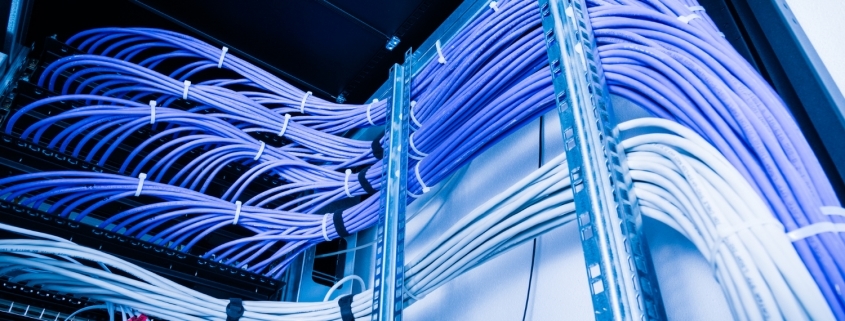

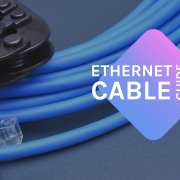
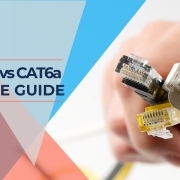



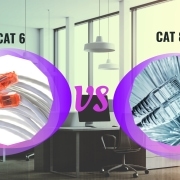
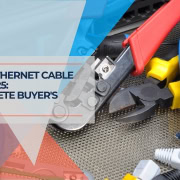


Leave a Reply
Want to join the discussion?Feel free to contribute!